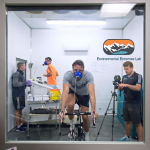Fire Service Instructors’ Working Practices: A UK Survey
Fire Service Instructors’ Working Practices: A UK Survey
Summary of Report
Miss Emily Watkins, Dr Mark Hayes, Dr Peter Watt, Dr Alan Richardson
There are anecdotal reports of ill health amongst instructors in the Fire and Rescue Service. To document the types of ill health experienced and the different working practices used, a survey of instructors across the UK was conducted. Firefighters were also asked to complete a shorter version of the survey to provide a comparison to instructors. In total, 135 instructors and 232 firefighters took part. The average age of instructors was 43±7yrs, and for firefighters was 41±8yrs. The average time in the role was 5±5yrs for instructors and 16±8yrs for firefighters. Instructors reported experiencing between 2 and 10 live fires a week, with 44.6% reporting that they follow no recommended limit for number of exposures. Pre and post cooling methods were rarely used by instructors, with 85.3% not using pre cooling methods and 78.4% not post cooling. Cooling methods that were used varied, and included: ice slurries, phase change vests, forearm cooling, and ice vests. 41.1% of instructors also reported that they do not have or follow hydration guidelines. This suggests that further work is needed to both investigate what the correct recommendations should be for preparing and recovering for a wear and what appropriate wear limits should be, but also that better communication of guidance is needed.
In reference to health questions, new symptoms of ill health, which had not been experienced prior to starting as an instructor, were reported by 41.3% of instructors. Common symptoms included: fatigue, headaches, broken sleep, musculoskeletal pain, heavy sweating, heart palpitations, mood swings, and coughing/breathing problems. In comparison, 21.3% of firefighters reported new symptoms, including: back pain, post-traumatic stress disorder or depression, coughing or breathing problems, and headaches. Despite the greater proportion of instructors reporting symptoms of ill health than firefighters, firefighters reported taking a greater number of sick days (3 ± 7 for firefighters vs. 1 ± 3 for instructors). 44.95% of instructors reported that they did not feel comfortable reporting illness and sick leave. Instructors who completed 6-10 BA wears a month were 1.6 times more likely to suffer from new symptoms of ill health than those completing ≤5 BA wears. Those completing ≥11 BA wears a month were 4.5 times more likely to have new symptoms of ill health than those completing ≤5. Instructors who typically felt “exhausted” after a wear were 16.8 times more likely to suffer new symptoms than those who reported feeling “fine” afterwards. This indicates that instructors across the UK are experiencing a unique group of symptoms of ill health, which is different to those reported by firefighters. Some of these symptoms are linked with an increased risk of heat illness, as well as an increased risk of suffering from a cardiovascular event. The survey findings also suggested that the occurrence of these symptoms may be related to the number of wears completed.
Overall, the findings from this survey highlight the need for investigation into cooling methods, and clearer education and guidance on how best to prepare and recover from a wear, including appropriate hydration recommendations. Additionally, the survey indicates that instructors across the UK are experiencing a similar group of symptoms, which may be linked to an increased risk of serious health problems. Consequently, research is needed to identify the relationship between wear exposures and markers of ill health, to enable evidence based guidance on wear numbers to be produced.































